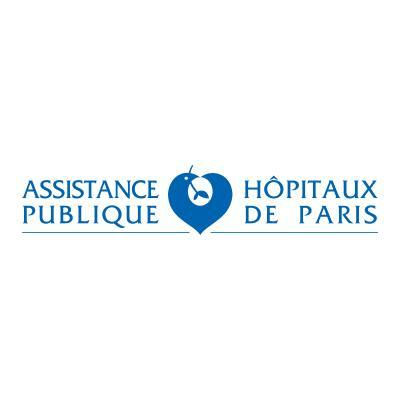预约演示
更新于:2025-05-07
Hypoxia-Ischemia, Brain
缺氧缺血性脑病
更新于:2025-05-07
基本信息
别名 Anoxia Ischemia, Brain、Anoxia Ischemia, Cerebral、Anoxia-Ischemia, Brain + [110] |
简介 A disorder characterized by a reduction of oxygen in the blood combined with reduced blood flow (ISCHEMIA) to the brain from a localized obstruction of a cerebral artery or from systemic hypoperfusion. Prolonged hypoxia-ischemia is associated with ISCHEMIC ATTACK, TRANSIENT; BRAIN INFARCTION; BRAIN EDEMA; COMA; and other conditions. |
关联
28
项与 缺氧缺血性脑病 相关的药物靶点 |
作用机制 ETB激动剂 [+3] |
在研机构 |
最高研发阶段批准上市 |
首次获批国家/地区 印度 |
首次获批日期2023-05-31 |
靶点- |
作用机制 细胞替代物 |
在研机构 |
在研适应症 |
最高研发阶段批准上市 |
首次获批国家/地区 加拿大 |
首次获批日期2014-05-02 |
302
项与 缺氧缺血性脑病 相关的临床试验IRCT20110807007244N11
Comparison of the effect of erythropoietin and allopurinol on Prooxidant antioxidant balance, interleukin 6, 8 and 1 in infants with hypoxic ischemic encephalopathy
开始日期2025-10-01 |
NCT06810284
Effect of Sildenafil in Association to Hypothermia on Survival Without Brain Lesions in Term Neonates with Hypoxic-ischemic Encephalopathy (SHINE): Pharmacokinetic Study - Step 1
The main objective of this study is to assess pharmacokinetics features of IV sildenafil in neonates with hypoxic-ischemic encephalopathy and treated by controlled hypothermia. This phase 2 study will prepare a large phase 3 randomized controlled trial to demonstrate the superiority of a combinatory therapy associating IV sildenafil and controlled hypothermia compared to Placebo and controlled hypothermia, on survival without brain lesions on MRI at discharge, in neonates born after 36 weeks of gestation.
开始日期2025-07-01 |
ACTRN12621001135808
The effect of intraoperative thermal kidney insulation on current kidney transplantation surgical practices: a pilot feasibility study.
开始日期2025-07-01 |
100 项与 缺氧缺血性脑病 相关的临床结果
登录后查看更多信息
100 项与 缺氧缺血性脑病 相关的转化医学
登录后查看更多信息
0 项与 缺氧缺血性脑病 相关的专利(医药)
登录后查看更多信息
27,228
项与 缺氧缺血性脑病 相关的文献(医药)2025-12-31·The Journal of Maternal-Fetal & Neonatal Medicine
Time of day/unit busyness at birth and perinatal hypoxia and or moderate to severe hypoxic ischemic encephalopathy a cohort study
Article
作者: Tang, Selphee ; Hicks, Matt ; Mohammad, Khorsid ; Wood, Stephen
2025-12-31·Gut Microbes
Gut microbial dysbiosis exacerbates long-term cognitive impairments by promoting intestinal dysfunction and neuroinflammation following neonatal hypoxia-ischemia
Article
作者: Cai, Dingliang ; Wu, Xuyang ; Chen, Xiaohui ; Chen, Pinzhong ; Teng, Chengqian ; Zheng, Xiaochun ; Wei, Jianjie ; Chen, Andi ; Zhu, Hui ; Qian, Haitao ; Zhang, Honghong
2025-12-31·Annals of Medicine
The roles of pleiotrophin in brain injuries: a narrative review of the literature
Review
作者: Zhou, Ruixi ; Qiu, Xia ; Mu, Dezhi ; Lei, Yupeng ; Mao, Qian
105
项与 缺氧缺血性脑病 相关的新闻(医药)2025-04-04
·药学进展
“点击蓝字 关注我们《药学进展》创新中药与天然药物专题文章推荐(更新到2025-04-03) PPS 亲爱的读者朋友:《药学进展》一直致力于为读者提供医药科技前沿与新药研发动态的信息资讯。为了进一步提升阅读体验,我们精心梳理了近年来的文章,按主题细分并实时更新,希望为医药领域专业人士带来更加精准、高效的信息服务,让阅读成为一次真正的知识之旅。本篇重点介绍“创新中药与天然药物专题 ”(更新至2025-04-03),欢迎关注,一同探索新药研发的无限可能 !1中药基于“肠-肝轴”防治非酒精性脂肪性肝病的研究进展作者:陈欢,徐陆周,黄芳 摘要:非酒精性脂肪性肝病是全球性的公共健康问题,其发病机制复杂,临床治疗手段有限。中药作为我国特色用药,以中医传统理论为指导,在此类复杂肝病的治疗中表现出显著优势。肝脏与肠道之间存在广泛而密切的交流,现有研究表明,肠道微生物紊乱在非酒精性脂肪性肝病等肝脏疾病的进展中发挥重要作用,与中医“脾胃学说”不谋而合。从“肠-肝轴”角度出发研究中药作用机制,对于阐明中药多成分、多靶点特征有重要意义,也可为非酒精性脂肪性肝病的临床药物开发提供重要理论参考。综述中药基于“肠-肝轴”防治非酒精性脂肪性肝病的研究进展。 关键词:中药;肠-肝轴;非酒精性脂肪性肝病;肠道菌群 本文引用格式:陈欢, 徐陆周, 黄芳. 中药基于“肠-肝轴”防治非酒精性脂肪性肝病的研究进展[J]. 药学进展, 2024, 48(11): 849-859.微信浏览全文请点这里独家原创 | 黄芳教授:中药基于“肠-肝轴”防治非酒精性脂肪性肝病的研究进展下载PDF请复制以下网址,在PC端浏览器中打开https://pps.cpu.edu.cn/article/exportPdf?id=38ad4fdc-4c77-4ce5-801d-4f43ba5767822小檗碱预防性治疗糖尿病肾病的研究进展作者:张雅晨,孙建国摘要:糖尿病肾病是糖尿病微血管并发症之一,其发病机制复杂,与糖脂代谢紊乱、炎症、氧化应激、自噬受损、肠道菌群失调等因素交叉关联,也是导致终末期肾病的主要原因。综述了糖尿病肾病的主要发病机制以及小檗碱预防性治疗糖尿病肾病的研究进展,旨在为糖尿病肾病治疗药物的研发提供参考。关键词:糖尿病肾病;小檗碱;发病机制;糖尿病并发症本文引用格式:张雅晨,孙建国.小檗碱预防性治疗糖尿病肾病的研究进展[J].药学进展,2023,47(3):217-226.微信浏览全文请点这里独家原创 | 孙建国研究员:小檗碱预防性治疗糖尿病肾病的研究进展下载PDF请复制以下网址,在PC端浏览器中打开https://pps.cpu.edu.cn/article/exportPdf?id=7cc4ca4c-7d63-4d10-b8cf-21ee22eac8393中药单体干预前列腺癌的作用机制研究进展作者:王华婷,俞采妮,康媛源,李丹 摘要:前列腺癌是全球男性常见的恶性肿瘤,在我国也有较高的发病率和死亡率。中药单体结构明确且来源丰富,在开发前列腺癌治疗药物方面有着独特的优势。围绕雄激素受体依赖和雄激素受体非依赖两个方面综述了中药单体在前列腺癌治疗中的作用机制,以期为探索中药治疗前列腺癌的具体方案提供参考,为新型前列腺癌治疗药物的开发提供有用信息。关键词:前列腺癌;雄激素受体;作用机制;中药单体本文引用格式:王华婷,俞采妮,李丹,等.中药单体干预前列腺癌的作用机制研究进展[J].药学进展,2022,46(12):951-960. 微信浏览全文请点这里独家原创 | 李丹副教授:中药单体干预前列腺癌的作用机制研究进展下载PDF请复制以下网址,在PC端浏览器中打开https://pps.cpu.edu.cn/article/exportPdf?id=b7d3df9f-1fa2-44ba-a710-16cefa3839cb4环黄芪醇对端粒功能障碍疾病的药理作用及其机制研究进展 作者:何梦婷,车浩洁,王惠芳,李婷,李绿洲,王进欣摘要:端粒因染色体不完全复制问题而不断缩短,进而引发一系列疾病。研究发现,包括缺血性脑损伤、糖尿病并发症、特发性肺纤维化、骨质疏松症等在内的多种疾病均与端粒功能障碍相关。环黄芪醇是黄芪甲苷Ⅳ的苷元,具有抗衰老、抗凋亡、抗纤维化、免疫调节、促进细胞增殖和伤口愈合等药理作用。环黄芪醇是目前天然产物中唯一被报道的端粒酶激活剂,具有独特的研究意义。概述了环黄芪醇对衰老相关疾病、神经退行性疾病、糖尿病并发症、特发性肺纤维化等端粒功能障碍疾病的药理作用及其机制的研究进展。关键词:端粒;端粒酶;环黄芪醇;药理作用;机制研究;端粒功能障碍本文引用格式:何梦婷,车浩洁,李婷,等.环黄芪醇对端粒功能障碍疾病的药理作用及其机制研究进展[J].药学进展,2022,46(11):867-874. 微信浏览全文请点这里独家原创 | 王进欣教授:环黄芪醇对端粒功能障碍疾病的药理作用及其机制研究进展下载PDF请复制以下网址,在PC端浏览器中打开https://pps.cpu.edu.cn/article/exportPdf?id=bc544ab4-e06c-4209-aaa9-53d308b0bbd75天然生物活性分子发现研究的机遇与挑战 作者:叶文才摘要:天然产物是新药先导物的重要源泉,其多样的化学结构及广泛的生物活性一直以来都是人们关注的焦点。著名有机合成化学家K. C. Nicolaou教授在其撰写的《改变世界的分子》(Molecules that Changed the World)一书中介绍了影响人类历史进程的30个最重要的分子。关键词:有机合成化学;人类历史进程;天然产物;天然生物活性;先导物;机遇与挑战;重要源泉本文引用格式:叶文才.天然生物活性分子发现研究的机遇与挑战[J].药学进展,2022,46(3):161-162.微信浏览全文请点这里独家原创 | 暨南大学叶文才:新兴科学技术赋能天然生物活性分子发现,创新药物研究迎来新契机下载PDF请复制以下网址,在PC端浏览器中打开https://pps.cpu.edu.cn/article/exportPdf?id=e2cc78ac-f2ab-4d5a-b23e-25633b42bdd16天然生物活性分子高效发现的新策略和方法研究进展作者:吴振龙,王英,叶文才摘要:天然生物活性分子是创新药物的重要源泉。然而,长期以来天然生物活性分子发现研究的基本理论和方法并没有根本性的提升,仍存在发现周期较长、人工消耗大、发现过程带有盲目性等问题,严重制约了源于天然生物活性分子的创新药物发现研究。近年来,随着现代分析技术、代谢组学、生物信息学、人工智能等的快速发展,国际上出现了基于质谱技术、核磁共振技术等多学科交叉的天然生物活性分子发现的去重策略和方法,如分子网络技术、小分子精准识别技术等。这些新策略、新方法的应用极大地提高了新颖结构天然生物活性分子的发现效率,也逐渐推动传统的研究策略和方法发生变革。对基于质谱技术、核磁共振技术的天然生物活性分子高效发现新策略和新方法进行总结,为上述技术的进一步开发和利用提供参考。关键词: 天然生物活性分子;质谱;核磁共振;去重本文引用格式:吴振龙,王英,叶文才.天然生物活性分子高效发现的新策略和方法研究进展[J].药学进展,2022,46(3):163-172. 微信浏览全文请点这里叶文才教授:中药及天然药物活性成分: 新药研发的重要源泉(独家原创)下载PDF请复制以下网址,在PC端浏览器中打开https://pps.cpu.edu.cn/article/exportPdf?id=ba95cf78-d210-45ec-91c6-5f685d8662547真菌沉默基因簇激活策略研究进展作者:吕建明,曹志秦,黄嘉华,陈国栋,胡丹,高昊摘要:真菌次生代谢产物一直是天然药物的重要源泉,然而目前人们从真菌中发现新天然产物的几率越来越低。近年来,随着基因组测序技术的飞速发展,越来越多的真菌基因组被解密。生物信息分析显示,真菌基因组中编码天然产物的基因簇数目远远大于已从中发现的天然产物数量,提示真菌中尚存在大量的沉默基因簇有待深入发掘。因此,如何高效地激活真菌沉默基因簇已成为后基因组时代深度利用真菌资源的关键。系统总结了近年来真菌沉默基因簇激活策略的研究进展,以期为真菌资源的高效利用提供参考。关键词:真菌;沉默基因簇;非定向激活策略;定向激活策略本文引用格式:吕建明,曹志秦,陈国栋,等.真菌沉默基因簇激活策略研究进展[J].药学进展,2022,46(3):173-183.微信浏览全文请点这里激活真菌中的“沉默”基因簇,开启新颖结构化合物发现的新源泉下载PDF请复制以下网址,在PC端浏览器中打开https://pps.cpu.edu.cn/article/exportPdf?id=36158294-a4ac-4027-b22f-a01bb15505228天然产物提取分离技术研究进展作者:邱玲,刘宇,郑楠楠,宋敏,陈能花,冯瑞冰,王泽雨,周燕青,张庆文 摘要:天然产物是生物在自然界长期进化和生长过程中不断被选择和优化的结果。天然产物具有独特的化学结构和良好的生物活性,是新药设计和研发的重要源泉。随着社会经济和科学技术的不断发展,天然产物化学的研究手段取得了较大的进展。对天然产物的提取分离技术进行总结,以期为天然产物的化学研究提供参考和思路。关键词:天然产物;提取;分离;色谱本文引用格式:邱玲,刘宇,宋敏,等.天然产物提取分离技术研究进展[J].药学进展,2022,46(3):184-197.微信浏览全文请点这里独家原创 | 张庆文:聚焦现代提取与分离新技术,突破天然产物高通量活性筛选的瓶颈下载PDF请复制以下网址,在PC端浏览器中打开https://pps.cpu.edu.cn/article/exportPdf?id=6b966315-054e-41cc-99e2-a4b7eb1831f09海洋微生物培养新技术研究进展作者:周春云,张琪,张瀚文,杨昊翼,陆园园摘要:近年来,新化学结构和生物活性物质的发现几率持续下降,为了克服传统培养方法的不足,各种微生物培养新技术应运而生,主要包括共培养、高通量培养、诱捕器原位培养筛选以及土壤基质膜系统方法等。对近年来上述4种微生物培养新方法的研究案例进行归纳总结,旨在为未来的微生物培养提供借鉴,以期发现更多新型的天然产物。关键词:海洋;微生物;共培养;高通量;原位培养;土壤基质膜系统本文引用格式:周春云,张琪,杨昊翼,等.海洋微生物培养新技术研究进展[J].药学进展,2022,46(3):198-207. 微信浏览全文请点这里独家原创|中国药科大学陆园园:荟萃微生物培养技术研究进展,助力海洋新颖次级代谢产物发现下载PDF请复制以下网址,在PC端浏览器中打开https://pps.cpu.edu.cn/article/exportPdf?id=7d4c7884-bb45-4eca-8927-1233badd4892感谢您阅读《药学进展》微信平台原创好文,也欢迎各位读者转载、引用。《药学进展》杂志由国家教育部主管、中国药科大学和中国药学会共同主办,中国科技核心期刊(中国科技论文统计源期刊)。刊物以反映药学科研领域的新方法、新成果、新进展、新趋势为宗旨,以综述、评述、行业发展报告为特色,以药学学科进展、技术进展、新药研发各环节技术信息为重点,是一本专注于医药科技前沿与产业动态的专业媒体。《药学进展》注重内容策划、加强组稿约稿、深度挖掘、分析药学信息资源、在药学学科进展、科研思路方法、靶点机制探讨、新药研发报告、临床用药分析、国际医药前沿等方面初具特色;特别是医药信息内容以科学前沿与国家战略需求相合,更加突出前瞻性、权威性、时效性、新颖性、系统性、实战性。根据最新统计数据,刊物篇均下载率连续三年蝉联我国医药期刊榜首,复合影响因子1.216,具有较高的影响力。《药学进展》编委会由国家重大专项化学药总师陈凯先院士担任主编,编委由新药研发技术链政府监管部门、高校科研院所、制药企业、临床医院、CRO、金融资本及知识产权相关机构近两百位极具影响力的专家组成。联系《药学进展》↓↓↓编辑部官网:pps.cpu.edu.cn;邮箱:yxjz@163.com;电话:025-83271227。欢迎投稿、订阅!往期推荐“兴药为民·2023生物医药创新融合发展大会”盛大启幕!院士专家齐聚杭城,绘就生物医药前沿赛道新蓝图“兴药强刊”青年学者论坛暨《药学进展》第二届青年编委会议成功召开“兴药为民·2023生物医药创新融合发展大会”路演专场圆满收官!校企合作新旅程已启航我知道你在看哟
微生物疗法临床研究
2025-03-26
·医药地理
苯巴比妥致新生儿惊厥皮肤不良反应药学监护 1 例并文献复习
Pharmacologic monitoring of cutaneous adverse reaction induced by phenobarbital in neonatal convulsions: a case report and literature review
李燕慈1,2,刘建芳2 ,张艳萍2 ,王晓娇3 ,郑 侠3*,孟 瑶1*
(1. 首都医科大学附属北京儿童医院药学部,北京 100045;2. 山东省日照市人民医院药学部,山东日照 276800;3. 首都医科大学附属北京儿童医院新生儿中心,北京 100045)
引用
李燕慈, 刘建芳, 张艳萍, 等. 苯巴比妥致新生儿惊厥皮肤不良反应药学监护1例并文献复习[J]. 世界临床药物, 2025, 46(2): 184-187. DOI:10.13683/j.wph.2025.02.011.
作者简介
李燕慈,主管药师,研究方向:小儿用药。
通信作者:郑侠,副主任医师,研究方向:新生儿重症、新生儿内科及 小儿内科。
孟瑶,主管药师,研究方向:新生儿用药和小儿用药。
01
摘要
回顾性分析北京某儿童医院 1 例新生儿惊厥患儿临床资料。患儿为 1 个月 10 d 男婴,诊断缺氧缺血性脑病伴新生儿惊厥。入院即应用苯巴比妥 3 d,面部出现皮疹。入院 D7,患儿皮疹加重,考虑多形红斑,停用苯巴比妥,改予左乙拉西坦联合硝西泮,并予抗过敏治疗。入院 D11,患儿颜面、躯干仅有少许皮疹,较前好转。D17,患儿未见明显抽搐发作, 躯干、四肢环形红斑不明显,予出院。该病例提示临床药师需关注苯巴比妥在新生儿中的应用情况,应根据临床表现、发病机制、预后,与医生讨论和调整治疗方案,避免或减少引发皮肤药物不良反应。
02
关键词
苯巴比妥 ;新生儿惊厥 ;皮肤不良反应 ;药学监护
03
章节导览
1 病历资料
2 诊治经过
3 讨论
3.1 苯巴比妥致皮肤不良反应的关联性评价
3.2 苯巴比妥用药所致皮肤不良反应文献复习
3.3 苯巴比妥致皮肤不良反应机制
3.4 苯巴比妥致皮肤不良反应药学监护
04
文章节选
新生儿惊厥是新生儿神经功能障碍中最常见的临床表现,患病率为1‰~5‰ 。新生儿期惊厥发生率远高于其后任何时期,且 80% 新生儿惊厥发生于出生后 1 周内。相关指南推荐苯巴比妥作为新生儿惊厥发作的一线治疗药物,其疗效确切、耐受性佳,无需根据胎龄调整剂量。
药疹属于皮肤药物不良反应 (cutaneous adverse drug reaction,cADR),是指药物进入人体后引发 的皮肤黏膜炎症性皮损,多数药疹的发生与变态反应相关,包括免疫球蛋白 (immunoglobulin,Ig) E 依赖的药物反应,以及人类白细胞抗原 (human leukocyte antigen,HLA)、T 淋巴细胞受体诱导的相关炎症等。伴嗜酸粒细胞增多和系统症状的药物反应(drug rash with eosinophilia and systemic symptom,DRESS) 属于重症药疹,引发 DRESS 的常见致敏药物包括抗癫痫药物 ( 如卡马西平、苯 巴比妥 )、抗生素及解热镇痛药等。抗癫痫药物可在儿童期引发过敏反应,其中芳香型抗癫痫药物是导致严重皮肤不良反应的主要原因。本研究中,临床药师回顾性分析 1 例苯巴比妥致新生儿惊厥患儿皮肤不良反应的临床资料,探索药学监护过程,并复习相关文献。
←长按二维码阅读原文
END
聚焦药物综合评价 促进临床合理用药
请看《世界临床药物》!
本刊为月刊,大16开。邮发代号4-302,全国各地邮局均可订阅。
定价:26元,全年312元。
订阅电话:021-62790477-751
订阅传真:021-62473200
订阅邮箱:guohx@pharmadl.com
点分享
点收藏
点在看
点点赞
临床研究
2025-03-23
·米内网
精彩内容
万邦德最新盈利预告显示,公司录得2024年净利润约6500~9000万元,同比增长32.09%~82.89%。为应对产品同质化竞争,万邦德优先聚焦现代中药、罕见病药等潜力赛道,培育出银杏叶滴丸、石杉碱甲注射液等核心畅销品种;多元化与国际化“两手抓”,石杉碱甲、甲钴胺等罕见病药成功“出海”,医疗器械业务依托“中非协同”战略大放异彩......万邦德秉承“创新驱动发展”核心理念,通过“实业+技术+资本”模式,深耕医药大健康产业,探寻业绩增长新机遇。
净利预增32%~82%!万邦德“优化经营”策略成效显著
来源:公司公告
日前,万邦德发布最新盈利预告,公司于2024财年录得净利润约为6500~9000万元,同比增长32.09%~82.89%;扣非净利润约为1550~4050万元;基本每股收益为0.11~0.15元/股(2023财年为0.08元/股)。
报告期业绩同比上升,万邦德分析其主要原因有:一是公司通过加大应收账款催收力度,信用减值准备同比减少;二是南非子公司进一步优化运营体系,积极采取措施提升市场占有率,盈利水平显著提升;三是公司子公司土地房产被政府征收,资产处置收益同比增加。
翻看公司近年的业绩报告,万邦德自2021年起正式剥离铝加工业务后,营业收入曾出现一定程度的波动。不过随后的几年里,通过在产业战略上的调整、经营策略上的优化、医药+医疗等大健康领域上的发力,万邦德将有望拨开迷雾,进一步实现转型升级,迎来新的发展机遇。
从起步到转型,开启探索医药大健康的传奇之路
万邦德的传奇故事最早可追溯到1970年。当时,万邦德制药集团在浙江省台州温岭市成立,开始了在医药领域的探索与耕耘之路。成立之初,公司专注于现代中药、原料药及制剂的研发、生产和销售,逐渐形成了“以天然植物药为特色,心脑血管和神经系统用药为主导,呼吸系统和其他领域用药有选择性突破”的产品格局。
经过三十余年的稳健发展,万邦德亦意识到,仅靠公司内部资源推动其长期发展无疑略显乏力,积极拓展业务范围、借助融资上市才是破局的优选项之一。随后,万邦德相继发起对温岭制药厂、唐山渤海药业、宁波四明制药、江苏贝斯康药业等企业的收购项目,进一步扩大其在医药领域的市场份额及影响力。
时间来到2016年,这是万邦德发展历程中的一个重要转折点。通过一系列的资产重组、股权转让等操作,历经近五年的时间长跑,公司成功登陆深交所主板,股票代码为:002082。
上市后的万邦德,进一步将发展重心对准医药大健康领域,形成医药制造与医疗器械板块双向发力的格局。在医药制造领域,公司持续加大研发投入,2024年前三季度研发费用同比增长约9%;依托协同互补的产品技术平台,不断丰富和扩宽产品菜单,培育出银杏叶滴丸、石杉碱甲注射液等核心畅销品种,以及盐酸氯丙嗪片、间苯三酚注射液等首家过评品种。在医疗器械领域,公司围绕“医疗设备及医院工程集成服务+高分子器械+骨科器械”,加快推进“中非协同”战略,提升品牌影响力;整合医疗器械与健康科技产业资源,比如:成立温岭市万邦德健康科技有限公司、收购浙江康慈医疗有限公司等,增强企业核心竞争力。
通过一系列产业转型升级的布局,万邦德在盈利方面也展现出强劲的增长潜力。据其2024年三季度报显示,报告期内,公司实现营业收入10.74亿元,同比增长5.56%,归母净利润4570.6万元,同比激增756.36%。随着大健康产业的不断发展,万邦德有望受益于行业的增长趋势,实现业绩的持续提升。
聚焦现代中药、罕见病药潜力赛道,多元化与国际化齐头并进
业绩的增长有赖于独到的战略规划——万邦德优先将目光聚焦在现代中药和罕见病药这两条潜力赛道。
其中,银杏叶滴丸是万邦德独家心脑血管疾病中成药。作为预防、治疗心血管疾病的一线用药,国家基药及医保乙类药品种,银杏叶滴丸2023年在中国三大终端六大市场(统计范围详见本文末)销售额超过5亿元,2024上半年同比增长11.7%,是心血管疾病中成药丸剂TOP5产品。与此同时,公司生产银杏叶提取物原料药,凭借“原料药+制剂”的优势,进一步提升其银杏叶系列的市场地位。
石杉碱甲注射液可用于改善认知功能和记忆障碍、治疗阿尔茨海默病、全身型重症肌无力等,其中全身型重症肌无力已被纳入我国《第一批罕见病目录》。米内网数据显示,目前该药仅万邦德拥有生产批文,2023年在中国三大终端六大市场销售额在6000万元以上,同比涨幅35.43%。此外,石杉碱甲用于重症肌无力及新生儿缺氧缺血性脑病2项适应症均已获得美国FDA孤儿药资格认定,目前正推进IND申报的准备工作。
今年2月,万邦德罕见病药领域再传喜讯。公司的甲钴胺用于治疗肌萎缩侧索硬化(ALS)获得美国FDA授予的孤儿药资格认定。肌萎缩侧索硬化症俗称渐冻症,是一种因运动神经元受损而引起的神经系统疾病,常见症状包括肌肉无力、言语及吞咽困难、呼吸功能障碍等。目前尚无已知的疗法可阻止或逆转ALS的发展,确诊后平均生存期为2-5年。肌萎缩侧索硬化症同被纳入我国《第一批罕见病目录》。
来源:公司公告
除了医药制药领域的发展,万邦德多元化和国际化的战略布局还体现在多个方面。医疗器械业务上,公司持续推进“引进来,走出去”的中非协同发展战略,通过收购南非特迈克公司和爱力特公司,开启与南非医疗产业的深入合作;专注于脊椎融合器、骨科关节等植入式器械,医疗设备及医院工程服务,代理非洲市场多个国际、国内知名品牌的PET-CT、磁共振等医疗设备销售及维保服务。同时,公司已有多项一次性医用高分子耗材产品通过FDA 510(K)认定;公司部分原料药已开展境外销售业务等。
结语
回顾万邦德的“前世今生”,我们能看到一家传统药企在不断变革与创新中逐渐崛起的发展历程。从早期的医药制造企业,到迈进资本市场的上市公司,再到如今专注于医药大健康领域的领航者,万邦德始终秉承着“创新驱动发展”的核心理念,通过“实业+技术+资本”的模式,在医药大健康等新兴产业中探索前行,寻求业绩增长的新机遇。
来源:米内网数据库、公司公告及官网等注:米内网《中国三大终端六大市场药品竞争格局》,统计范围是:城市公立医院和县级公立医院、城市社区中心和乡镇卫生院、城市实体药店和网上药店,不含民营医院、私人诊所、村卫生室,不含县乡村药店;上述销售额以产品在终端的平均零售价计算。
免责声明:本文仅作医药信息传播分享,并不构成投资或决策建议。本文为原创稿件,转载文章或引用数据请注明来源和作者,否则将追究侵权责任。投稿及报料请发邮件到872470254@qq.com稿件要求详询米内微信首页菜单栏商务及内容合作可联系QQ:412539092
【分享、点赞、在看】点一点不失联哦
并购财报
分析
对领域进行一次全面的分析。
登录
或

生物医药百科问答
全新生物医药AI Agent 覆盖科研全链路,让突破性发现快人一步
立即开始免费试用!
智慧芽新药情报库是智慧芽专为生命科学人士构建的基于AI的创新药情报平台,助您全方位提升您的研发与决策效率。
立即开始数据试用!
智慧芽新药库数据也通过智慧芽数据服务平台,以API或者数据包形式对外开放,助您更加充分利用智慧芽新药情报信息。
生物序列数据库
生物药研发创新
免费使用
化学结构数据库
小分子化药研发创新
免费使用







